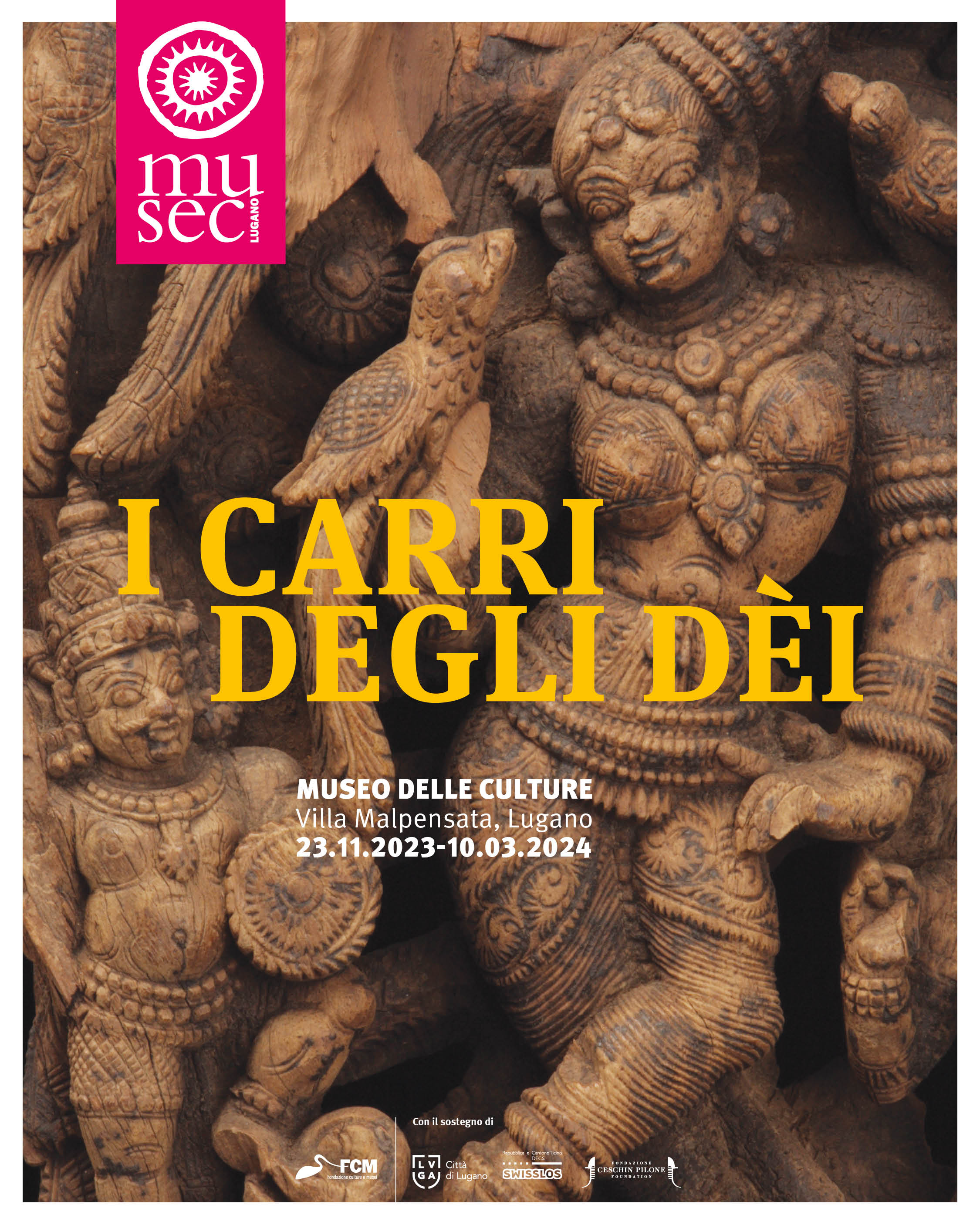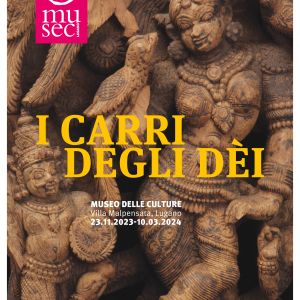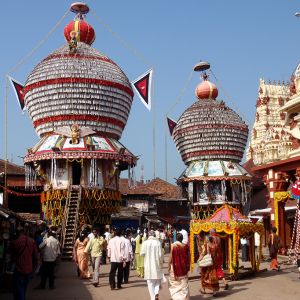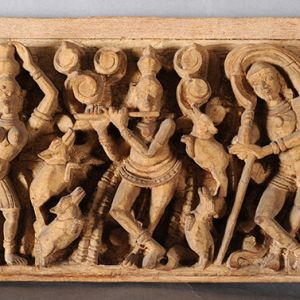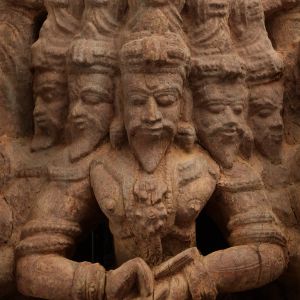23 NOVEMBER 2023 – 10 MARCH 2024
The exhibition is dedicated to the most significant of the many Indian celebrations that animate Hindu temples. The ‘Chariot Festival’, also known as the ‘Great Festival’, is a tradition that originated more than a thousand years ago and continues to this day. As complex and varied as the cultural and religious fabric of India is, the festival involves multiple rituals over several days and reaches its climax when the deity leaves the temple to meet his devotees. The deity temporarily leaves the most secret and sacred part of the temple embodied in a sculpture, which is hoisted on the top of majestic chariots, up to 30 metres high, sumptuously decorated and drawn in procession through the streets around the temple. Even the humblest of devotees are thus granted the privilege of darśana, the vision of the divine. The exhibition and its catalogue bring together the results of several years of field research conducted by Giulia R. M. Bellentani, a MUSEC scientific collaborator specialised in Indian art and culture and curator of the project. The starting point for the research, which began in 2006 and has continued to the present day, was the study of the works in MUSEC’s Brignoni Collection, relating to Indian ceremonial chariots and their context, to which other works were later added, thanks to donations from private collectors. A selection of works from MUSEC can be admired in the exhibition, flanked by loans from the Rietberg Museum in Zurich, as well as from the Ethnological Museum of the University of Zurich (E. Kaemmerling’s depository), whose objects are presented here to the public for the first time. There are 54 works on display in the five rooms on the top floor of Villa Malpensata, most of them dating from the period between the 17th century and the first half of the 20th century.
The oldest work dates from between the 12th and 13th century.It consists of wooden sculptures depicting the personifications of some of the deities that populate the boundless Indian pantheon and of carved panels and wood carvings that decorated ceremonial chariots. Deeds and events of the deities, festive scenes and fertility celebrations are depicted, including subjects of an erotic nature, presented in a separate area of the exhibition.
The visitor can also get an insight into the atmosphere of the festival thanks to a film made in 1930 by the Swiss artist and Indologist Alice Boner in Puri, in the state of Orissa (eastern India). According to local ideological conceptions, the encounter with the gods during the Chariot Festival is considered a source of well-being, prosperity and fertility, for the individual worshipper as well as for the entire community. The atmosphere imbued with joy and devotion gives this event a special significance in the Indian cultural fabric.In this sense, it is significant that today the Chariot Festival is also celebrated outside the borders of India, where there is a substantial Indian community of Hindu faith, such as in Paris or Frankfurt am Main.
The Chariot Festival is much more than a religious celebration; it is a cultural and spiritual experience that combines art, history and devotion in an extraordinary symphony. The exhibition design invites the visitor to participate in this extraordinary event and immerse himself in the opulence of shapes and colours of Indian tradition.Giulia Bellentani (b. 1968) collaborates with the Museo delle Culture in Lugano and carries out research and teaching activities at numerous associations, institutes and universities.Her studies focus on oriental art and architecture, particularly from the Indian subcontinent.Some of her most in-depth research topics include Sanskrit architectural treatises and their application in India and elsewhere, the art of the Adivasi peoples and the ceremonial chariots of the Hindu tradition.
Giulia Bellentani (n. 1968) collaborates with the Museo delle Culture in Lugano and carries out research and teaching activities at numerous associations, institutes and universities. Her studies focus on oriental art and architecture, particularly from the Indian subcontinent. Some of her most in-depth research topics include Sanskrit architectural treatises and their application in India and elsewhere, the art of the Adivasi peoples and the ceremonial chariots of the Hindu tradition.
